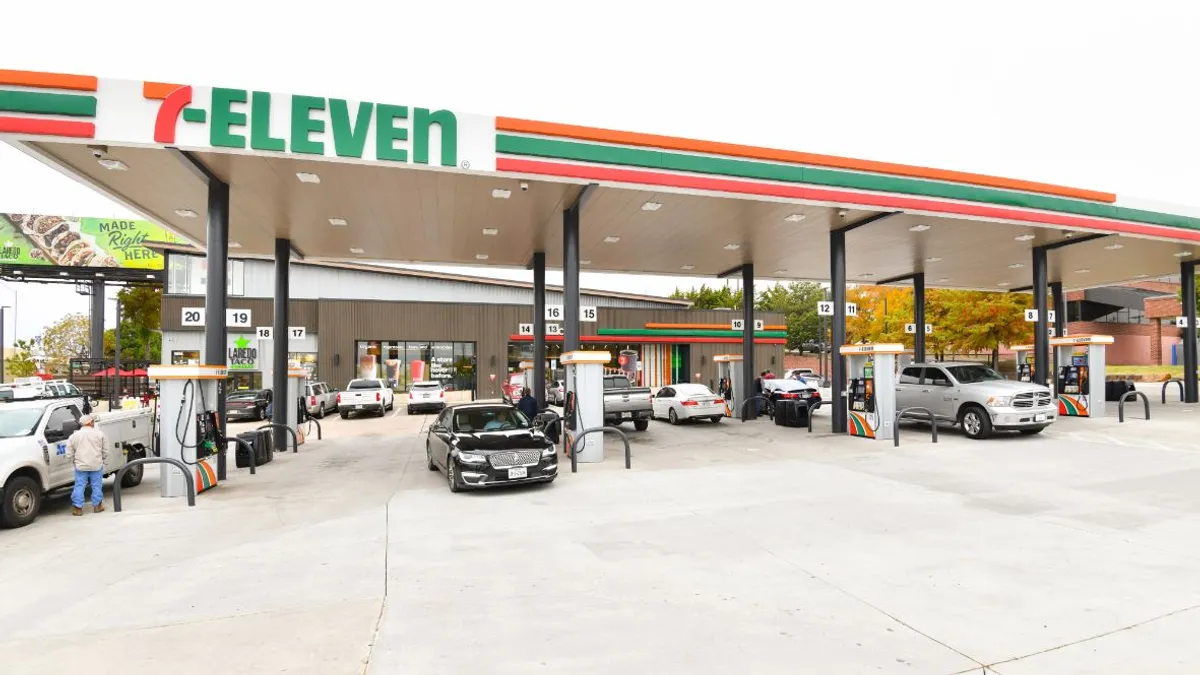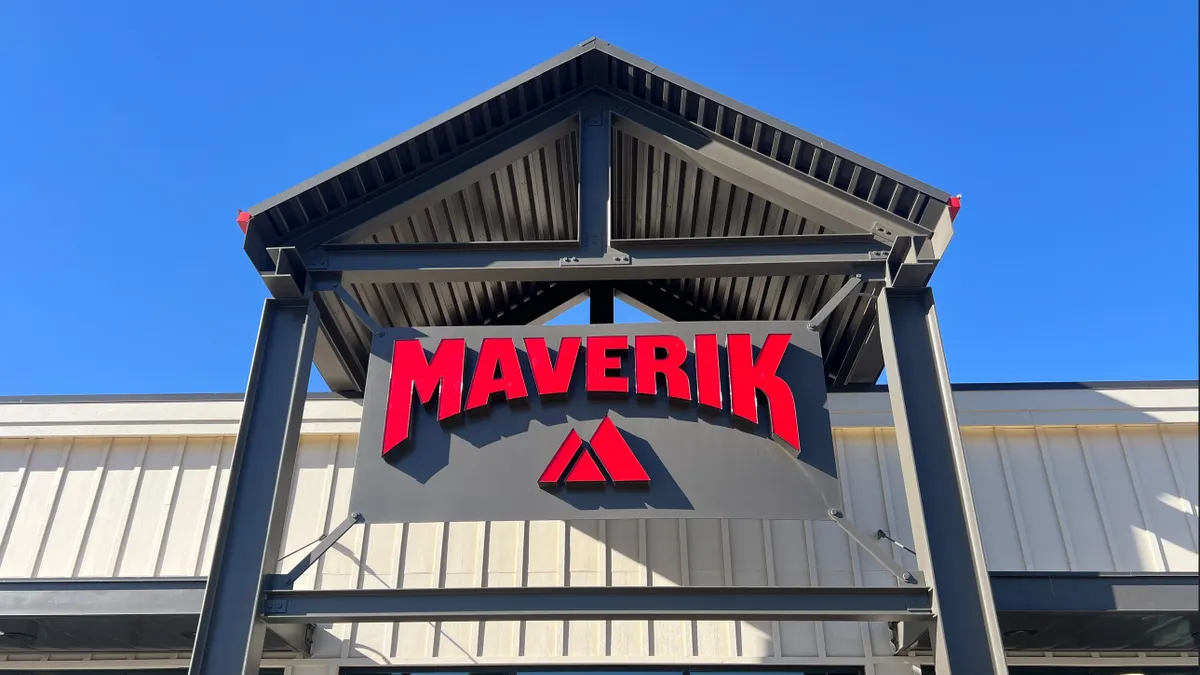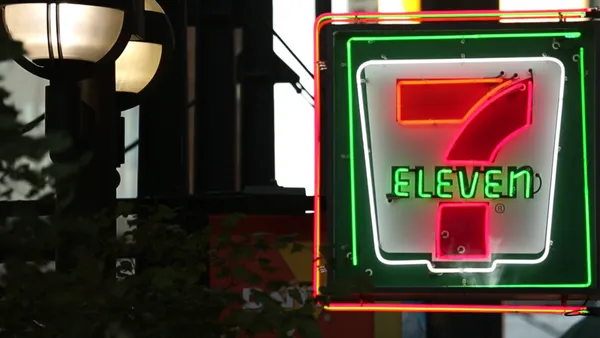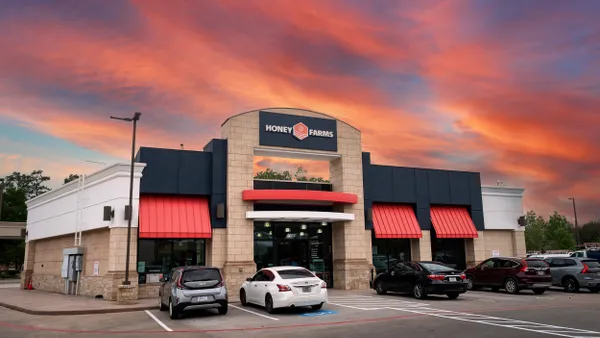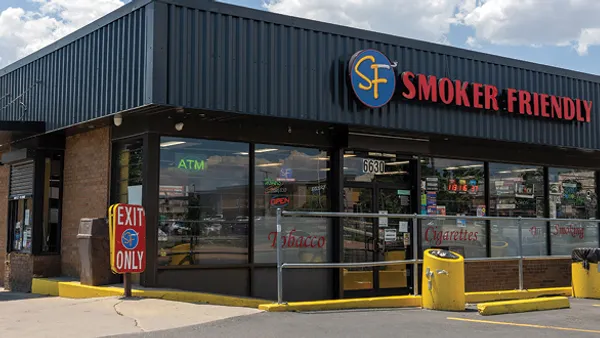Dive Brief:
- Murphy USA reached 1,700 locations in its convenience-store network during its fiscal third quarter — a feat previously accomplished by only four other c-store chains — and is on track to open about 23 more stores by the end of the year, Andrew Clyde, president and CEO, said during the company’s earnings call Thursday.
- The El Dorado, Arkansas-based company also has a dozen 1,400-square-foot raze-and-rebuild Murphy USA stores under construction, which will have kiosks and a “better grab-and-go food offer” than before, Clyde said on the call.
- Murphy USA also saw in-store merchandise sales grow nearly 10% from the prior-year quarter, primarily due to a boom in “non-tobacco merchandise” that was sold along with fuel transactions, Clyde said.
Dive Insight:
By hitting the 1,700 store milestone, Murphy USA joins 7-Eleven, Circle K, Casey’s General Stores and EG Group as the only companies to operate that many locations in the U.S.
Murphy USA hit the milestone by opening seven new-to-industry locations and reopening 10 raze-and-rebuilds in the quarter, bringing its year-to-date new-store count to 22 Murphy Express stores, one additional QuickChek location and 22 raze-and-rebuild Murphy USA stores.
The company currently has 36 new stores under construction, including the 12 aforementioned raze-and-rebuilds, 19 new Murphy Express stores and five QuickChek locations.
Murphy USA is on track to deliver a total of 40 to 45 new stores by the end of the year, and expects to do the same in 2023, Clyde said on the call.
Clyde said the costs have increased between $400,000 and $500,000 to build a new store — highlighting an uptick in the price of concrete as a factor — but that it won’t affect the company much since volumes remain high.
“As we’re seeing new stores come online, they’re achieving or exceeding those volume expectations [and] the consumer traffic at even higher margins,” he said.
The company’s “big upside” for its in-store merchandise during the quarter occurred thanks to higher-margin packaged beverages, center-store items and grab-and-go products associated with fuel trips, Clyde said.
“With fuel [trips] being up, naturally those attached-to-fuel categories performed really well,” he said. “As long as we continue to sustain higher fuel volumes ... those attached categories will remain [high].”





